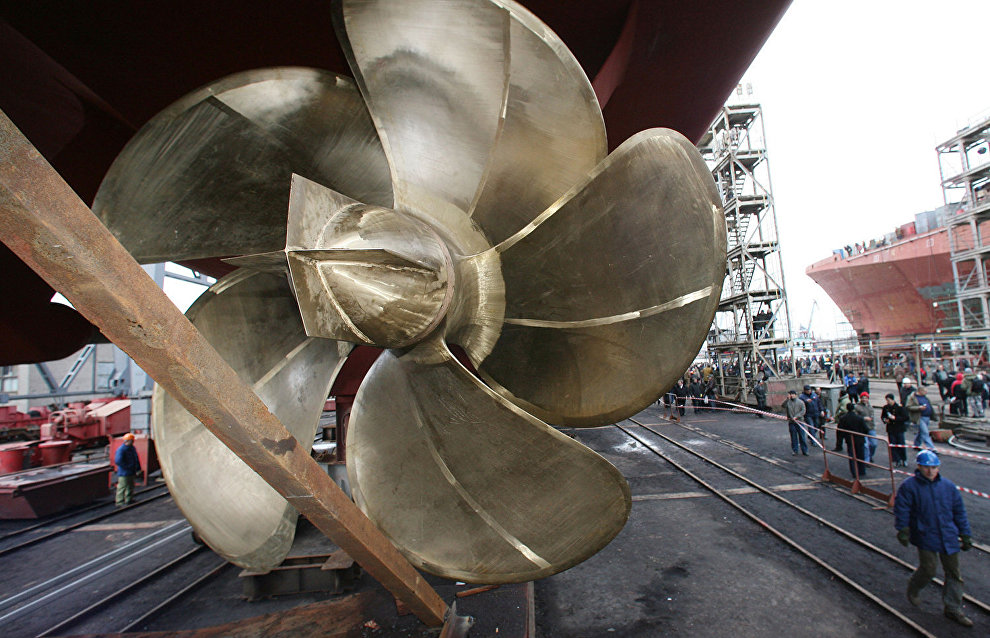Engineers create laser ‘printer’ for big ship parts
Engineers at St. Petersburg State Marine Technical University (SMTU) have developed Russia's first laser printer technology for creating and repairing large ship parts.
"A technological installation was designed and manufactured for the direct laser printing of metal parts as big as 1,200 x 1,200 x 800 mm in size," said SMTU Rector Gleb Turichin.
According to Turichin, this technology can be used for a wide range of materials, including steel, bronze, nickel and titanium alloys, to manufacture various large marine-related parts, including screws, brackets and other items weighing up to several hundred kilograms.
"We use a powder feeder in a special centrifuge that whips the metal dust with an inert gas (argon) carrier. Using special flasks, up to ten liters of metal powder is loaded into this feeder. The resulting gas-metal mixture is blown into the laser beam and onto a substrate. By constantly adjusting the working head of the machine that generates the laser beam, and the gas-powder jet combined with it, we can create the shape of the item that is being built up on the substrate," said Turichin.
A metal item can be built at a rate of up to two kilograms per hour. The machine allows us to combine materials to create metal composites and ceramic products. In addition, this technology can be used to repair damaged components; it is possible to build a part lost during operation.
"This technology was developed for use in the Arctic since even simple components that break down or are completely lost in the North can only be ordered from the mainland. So, parts have to be carried and shipped around the country. This is a lot of money and time, especially when it comes to icebreakers. Our printer can even be installed on a ship for fast maintenance. In addition, the machine can be used for materials intended for use at low temperatures," emphasized Gleb Turichin.
This parts printer was commissioned by the Zvyozdochka Shipyard (Severodvinsk), part of United Shipbuilding Corporation.
